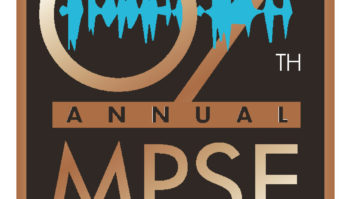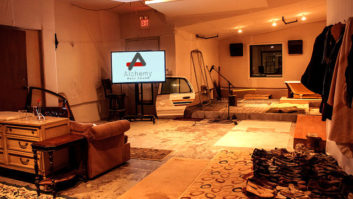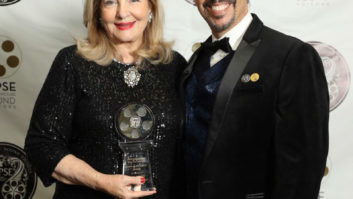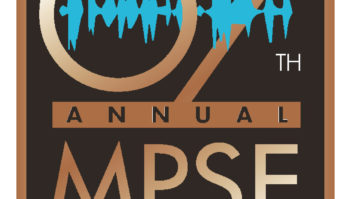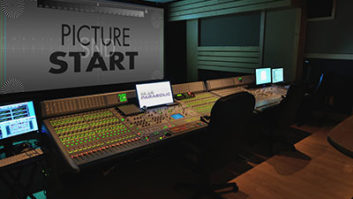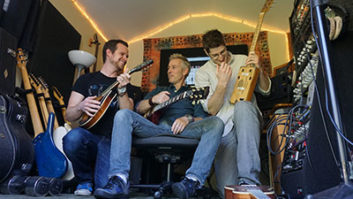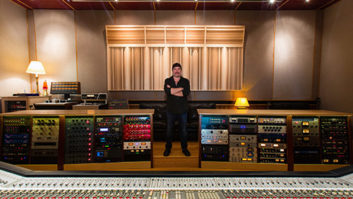
Ian steps out onto the gantry of a crane’s arm, suspended hundreds of feet above the street. Wind tugs at the loose fabric of his clothes. The metal sways, causing a caution light at the arm’s end to rattle. It’s a tense moment in the film Nerve, which opened in theaters July 27. In the film, players of an online game are paid to complete dares, and Ian (Dave Franco) has accepted the dare to walk out onto a crane arm. Just watching the scene delivers a rush of adrenaline even though in reality the crane arm is only 20 feet above the ground.
The Foley artist on the film, Leslie Bloome at New York’s Alchemy Post Sound, feels that the fine sonic details captured in Foley—the metal stressing under Ian’s footsteps, the loose light, the flapping of his clothing—pull the audience into Ian’s experience. “You can hear the rattle of the light’s glass against its metal housing, and just that one little sound helps to put you right there,” Bloome says. “That little sound helps the audience to experience the intensity of this one instance.”
As a Foley artist for the past 26 years, Bloome observes that when it comes to performing Foley, not much has changed since the days of radio dramas. But what has changed, says Foley artist Gary Hecker, is how directors and sound supervisors view the contribution that Foley can make to a project.
Hecker, considered one of the film industry’s top Foley artists, started 35 years ago at age 19 as a Foley apprentice on Star Wars: Episode V— The Empire Strikes Back. Then he followed his passion. He has seen the role of Foley increase over the course of his career, from being used minimally to cover scenes that had been looped, making a larger-scale contribution across the entire film. And that role is still growing. Recently Hecker has noticed that sound supervisors are turning to Foley as a way to cover story points with handcrafted sound effects.
“Many sounds that go into films are pulled from sound libraries, but here on the Foley stage everything is fresh and new,” he says. “It is custom-made for the project that we are working on. Foley contributes an organic feel to a film and it helps to add so much detail. That’s what people rely on me for the most now, to add detail, because I can handcraft the sound on the Foley stage right to the picture.”
Hecker, at Sony Pictures Studios in Culver City, Calif., has been the Foley artist on some serious feature films. This year alone he has created and performed Foley for Batman vs. Superman, Warcraft, Ghostbusters, Independence Day: Resurgence, Deepwater Horizon set for release September 30, and Snowden. Later this year he’s slated to work on The Dark Tower, Spider-Man: Homecoming, and Justice League. He’s even performed Foley for videogames, like the upcoming Call of Duty: Infinite Warfare.

Foley artist Gary Hecker on his stage at Sony Pictures Studios for the film Lone Survivor.
Bloome calls Foley “the glue that holds the whole sound design together.” He explains that sound designers, sound effects editors, and the Foley team all work together to tell the story through sound but in different ways. Take a car crash, for example. The sound effects editor will cut in an explosion with a sense of loudness and intensity, but the Foley team will put in the details, like glass shattering and debris scattering on the ground. “We are working together to help accentuate those effects and make them really sell,” says Bloome.
Hollywood blockbusters and AAA games aren’t the only projects that can benefit from Foley. Indie films and documentaries are more and more working Foley into their budgets. For example, on Netflix’s documentary series Making a Murderer, for which Foley artist Bloome recently earned an Emmy nomination, writers/directors Laura Ricciardi and Moira Demos rely on archival courtroom footage as part of their narrative on the true story of Steven Avery, a man wrongfully convicted of rape/attempted murder who had served 18 years of a 32-year sentence before DNA evidence proved that another man had committed the crime.
Bloome explains that the courtroom cameras were incredibly limited as to what they could capture, so the directors used Foley to help accentuate the harshness of Avery’s reality. The challenge was to add sounds that weren’t jarring or obtrusive, to get the right perspective so that the Foley didn’t conflict with the dialog or other elements. “We really had to bring to life the weight of Steven Avery’s handcuffs and leg restraints as he’s being brought into the courtroom. We really wanted to sell the heaviness of the moment in this virtually sterile environment,” Bloome says.
Another example is footage shot at the Avery’s family-owned junkyard. As the camera pans into the junkyard, Bloome says, “It’s completely dead and lifeless. Coming up with sounds, like the groan of the metal decaying or the shrub and brush scraping against the side of these dismantled vehicles, really bring up the feeling that this is rock bottom.” By utilizing Foley, Bloome feels they were able to bring those moments to life without being intrusive. “Even on a limited budget, Foley makes a big difference.”
Foley not only improves the soundtrack, it also boosts a film’s marketability. “Foley is a must for the M&E [music and effects] track,” says Foley mixer Colin Rogers, emphasizing its importance, especially for indie films seeking to enter the lucrative global film market. “There’s no question that you need to have Foley for your M&E for foreign distribution purposes.”
Rogers has spent the last 18 years mixing Foley at Roundabout Entertainment, a full-service post-production facility in Burbank, Calif. Throughout those years he’s noticed a decline in the time allotted for Foley and ADR, two post processes that go hand-in-hand; if a scene uses ADR, then it’s going to need Foley.

The Alchemy Post team of, left to right, Nick Seaman, Leslie Bloome, Ryan Collison and Joanna Fang.
In the case of Roundabout’s current series for MTV called Mary + Jane, premiering September 5, Rogers notes that numerous scenes are shot on the streets of Los Angeles. Those noisy locations require a large volume of ADR and Foley coverage. As the time scheduled to shoot and edit Foley gets whittled away, Rogers says, “We really have to move, and go, and get things done. We have less time to actually work on shows, to get things sounding right. If clients understand and spell out exactly what kind of sounds they are looking for—exactly how they want to hear the characters or props—then that is so helpful. If we understand exactly what the direction is from the beginning it prevents us from having to go back and re-shoot the Foley.”
Having an accurately cued Foley session and well-defined notes for the direction of the sound are key ways of maximizing efficiency on the Foley stage. Hecker agrees: “For projects that aren’t giant blockbusters or tent-poles, the budgets have gotten trimmer through the years. For those we have to prioritize and focus on the sounds the director or sound supervisor needs for story points they want to cover. It’s important to be precise. By really zeroing-in on the story they need to tell with sound, I believe that, on the Foley stage, we can get a lot of the sound package covered quite quickly.”
Great Foley is half performance and half engineering. A skillful Foley mixer can capture the right perspective, seamlessly syncing the Foley into the scene. That’s a real time saver for the sound supervisor and the re-recording mixers. At Alchemy Post, Bloome and Foley artist Joanna Fang work with Foley mixers Ryan Collison and Nick Seaman. Bloome says, “It’s important to have a good relationship between the Foley artist and the engineer, and I couldn’t ask for a better team. When the Foley is recorded at the proper perspective and depth of field, it can sit perfectly in the mix. We want it to sound as seamless as possible.”
Using a two-mic setup, the Foley mixers capture the sound close-up and from deeper in the room. By changing the balance of the two mics in the mix, they can change the perspective of the sound, making it match the action on-screen. Tweaking the EQ settings further helps to sync the sound. As an example, Rogers’ Foley recording setup includes two Avalon mic preamps, a Neumann 81 shotgun mic for close-up and a Neumann U 87 as the room mic. He says, “I depend on my Avalon pre-amps for EQ. I like to keep my Foley sounding as real as possible, and let the re-recording mixers handle any processing like reverb.”
The engineering side of Foley has seen significant changes over the years, from working with a limited number of channels on magnetic tape to utilizing the seemingly limitless track counts of digital nonlinear workflows. And in the next five years, maybe that will change even further as virtual reality infiltrates the film industry.
Films need Foley, so what will post sound workflows for virtual reality films look like for the Foley industry? Bloome weighs in, “For VR, I think the actual Foley performances are going to remain relatively the same but the recording techniques might change a bit. I think we might have to work more with different types of perspectives or maybe different multiple miking setups. Virtual reality is still in its infancy and it’s a very exciting place to be right now. It’s going to be really cool. I’m looking forward to it.”
